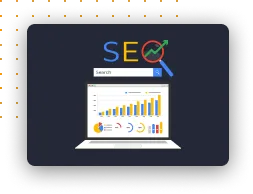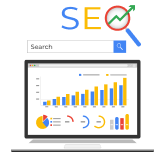In today’s digital age, having an effective website is no longer optional for local businesses. It’s a vital part of your branding and sales strategy. With countless potential customers searching for services online, your website serves as the first impression of your business. So, how do you ensure it stands out from the competition while also offering a seamless user experience? In this article, we’ll dive deep into essential local business website design tips to help you attract, engage, and convert local customers.
The Importance of a Well-Designed Local Business Website
A well-designed website not only reflects the professionalism of your business but also ensures a smooth customer experience. Your website should convey the values and services of your local business while being easy to navigate and visually appealing. It acts as the digital storefront of your business, and if customers find it unattractive or difficult to use, they’ll quickly move on to competitors. These local business website design tips will guide you through creating an online presence that resonates with your audience and drives results.
Prioritise Mobile-Friendly Design
In 2024, mobile internet usage surpassed desktop browsing, making it crucial that your local business website is optimised for mobile devices. Responsive web design ensures that your site looks and functions well on smartphones, tablets, and other mobile devices. A mobile-first approach involves scaling images, adjusting layouts, and ensuring that text is easily readable on smaller screens.
Additionally, Google uses mobile-friendliness as a ranking factor, meaning that a responsive design can boost your site’s visibility in search engine results pages (SERPs). With a large portion of local searches happening on mobile, this step is critical for attracting new customers.
Optimise for Local SEO
One of the most essential local business website design tips is to focus on optimising your site for local search engine optimisation (SEO). This involves including location-specific keywords throughout your website content, metadata, and image alt tags. Be sure to create a Google My Business profile and add your business to local directories like Yelp, which helps search engines link your website to geographic locations.
Other local SEO best practices include:
- Embedding Google Maps on your contact page.
- Using schema markup to provide search engines with detailed information about your business.
- Incorporating your NAP (Name, Address, Phone Number) consistently across all platforms.
Clear and Concise Call-to-Actions (CTAs)
Every local business website should guide visitors toward a specific action, whether it’s booking an appointment, making a phone call, or purchasing a product. This is done through well-designed call-to-action (CTA) buttons that stand out visually and use persuasive language.
CTAs should be placed strategically throughout your site. For example, on a local bakery's website, CTAs might encourage users to "Order Now" or "Check Our Menu." Ensure that these CTAs are easy to find, use contrasting colours, and are appropriately sized for both mobile and desktop screens.
Highlight Customer Reviews and Testimonials
For local businesses, word-of-mouth is gold. Online reviews serve as the modern-day equivalent of personal recommendations. Including customer reviews, testimonials, and case studies on your website helps to build trust with new visitors. Social proof is a powerful tool that reassures potential customers that your business delivers on its promises.
To make the most out of reviews:
- Display Google or Yelp reviews prominently on your homepage.
- Dedicate a specific page for detailed customer testimonials.
- Use a mix of text-based and video testimonials for authenticity and engagement.
Simplified Navigation Structure
A cluttered or confusing website navigation can frustrate visitors and lead them to leave your site. An intuitive and simple navigation menu improves the user experience and keeps people on your website longer. Stick to essential pages such as Home, About, Services, Blog, and Contact. Group related information under clear headings and avoid overwhelming visitors with too many links or sub-menus.
Keep in mind that local business customers typically look for specific information quickly, such as your business hours, location, and services. Make this information easy to find by featuring it on your homepage or linking it in your primary navigation.
Fast Load Times Matter
Speed matters when it comes to website design, especially for local businesses. If your website takes more than a few seconds to load, potential customers are likely to leave and look elsewhere. Slow load times can negatively affect your bounce rate and your search rankings, as Google uses page speed as a ranking factor.
There are several ways to ensure that your site loads quickly:
- Compress large image files.
- Use a reliable hosting provider.
- Enable browser caching and minimise HTTP requests.
Engaging and Relevant Content
Your website should provide valuable information that speaks directly to your target audience. This includes:
- A clear description of your services.
- A regularly updated blog with topics related to your industry and local community.
- Information about any special promotions or events.
Consider including a blog that covers local news, tips, and advice. Regularly updated content not only keeps your customers informed but also improves your local SEO by adding fresh, keyword-rich content.
High-Quality Images and Branding
The visual elements of your site should reflect the personality and professionalism of your business. Using high-quality images, videos, and graphics is essential to creating an appealing design. Avoid stock photos that look generic and impersonal, and instead, use photos of your actual products, location, and staff.
Brand consistency is key to maintaining a professional image. Be sure to use consistent colours, fonts, and logos throughout your site that align with your business’s overall branding strategy. A well-designed logo and uniform design elements help create a memorable impression in the minds of your visitors.
Create a Dedicated Contact Page
One of the most critical local business website design tips is to make it easy for potential customers to get in touch with you. Your contact page should be simple, yet effective, providing various ways for customers to reach you, such as:
- A phone number they can click on (especially on mobile devices).
- A contact form that’s short and easy to fill out.
- A map showing your business location.
- Links to your social media profiles.
If your business has multiple locations, make sure each location is easy to find, with clear directions and contact information.
Include Security Features
As cybercrime continues to rise, website security is a major concern for both businesses and their customers. Ensure your website is secured with an SSL certificate (HTTPS), which encrypts data between the server and the user. A secure website not only protects sensitive customer information but also boosts your credibility and trustworthiness.
Moreover, Google favours secure websites in its rankings, meaning that securing your site could improve your visibility online. Regularly update your website’s software and plugins to protect against vulnerabilities.
Local Business Website Design Tips FAQ
What is the most important aspect of local business website design?
Mobile optimisation is arguably the most critical element. A responsive, mobile-friendly website ensures that your business can reach customers on any device, improving user experience and search rankings.
How does local SEO impact my business website?
Local SEO helps your business appear in search results when people in your area are looking for your services. By optimising for local keywords, creating a Google My Business profile, and using location-based content, you increase your chances of being found online.
How can I improve my website’s loading speed?
To improve loading speed, compress images, use a fast web hosting service, enable browser caching, and minimise your website’s HTTP requests. These techniques ensure a faster, more efficient website experience for visitors.
Why should I include customer reviews on my website?
Customer reviews serve as social proof and help to build trust with potential customers. Positive reviews can make the difference between a visitor choosing your business over competitors.
What role does content play in website design?
Content is vital for both SEO and user engagement. Offering valuable, locally-focused content helps establish your authority and relevance in your community, while also boosting your search engine rankings.
How can I make my website more secure?
Installing an SSL certificate (HTTPS), regularly updating software, and using strong passwords are essential steps in keeping your website secure. Website security boosts your credibility with both customers and search engines.
Conclusion
A well-designed website is an essential tool for local businesses looking to thrive in a competitive market. By focusing on mobile optimisation, local SEO, user-friendly navigation, and engaging content, your website can become a powerful platform for attracting and retaining customers. Keep these local business website design tips in mind to ensure your website not only looks great but also performs effectively, helping your business grow and succeed in the digital age.
(+44) 03308080546
Send use a Message
Request a Free quotation





